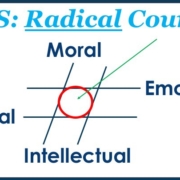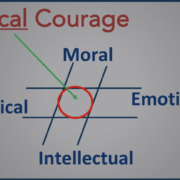Discover Your WHO
HOW TO DISCOVER YOUR ‘WHO’

I have two things of value for you.
First, we have been doing a lot of research on leader authenticity. Good leadership starts with knowing and owning your WHO. Each person is hardwired differently. Knowing and owning WHO you are as a leader makes you sincere and genuine.
There are lots of different personality tests — Highlands Ability Battery, Myers-Briggs, TTISI, Predictive Index, DISC, etc. These assessments provide highly detailed information, which can be very enlightening.
I’ve also found, though, that I had difficulty using these assessments to understand myself as a leader and what that means in the context of a leader team. I had trouble seeing the forest for the trees.
This challenge led me to look at the very basic ways people are hard-wired that affect how they lead. We wanted to find which factors were durable (unlikely to change as we grew or with context) and salient (directly affects how we operate as leaders). Stripping away those that seemed malleable, we came up with two factors that seem durable and salient: introversion – extroversion and detail – vision orientation.
Putting these in a quad chart reveals four distinct leader-personas: Pioneers, Reconcilers, Operators, and Mavericks. We call this the KSLA’s PROM Leader Persona method.

To find out which one you are and what that means to you as a leader, take this short assessment: (CLICK HERE TO TAKE ASSESSMENT)
No matter what field you are in — nonprofits, business, sports, government, or military — knowing and OWNING your leader persona will help you see yourself, lead with authenticity, and build diversity of the mind around you.
We will be coming out with more of our research on leader authenticity in the coming weeks.
Second, did you ever notice that the WE comes before me in aWEsoME? Organizations that want a healthy, winning culture need people willing to work together as a team. This is more likely to happen when:
- Leaders take the time to explain the big picture and the strategy to reach the organization’s goals — the WHY;
- The values and expectations are clear and are consistent with what actually happens in the workplace — the HOW;
- People have faith and confidence that their leaders will care for them as individuals, even as people work together in teams.
These key points have been consistent over time. The Battle of Shiloh, among others, is an example: The Confederate leaders got none of these three things right. Here’s what happened next.
Best wishes,
Chris Kolenda
P.S. if you like these videos, please sign up for our YouTube channel — hit the bell so you get notified when we roll out a new video.









